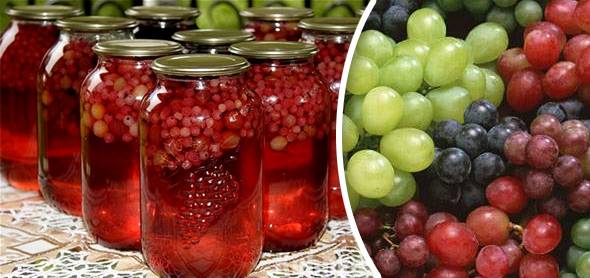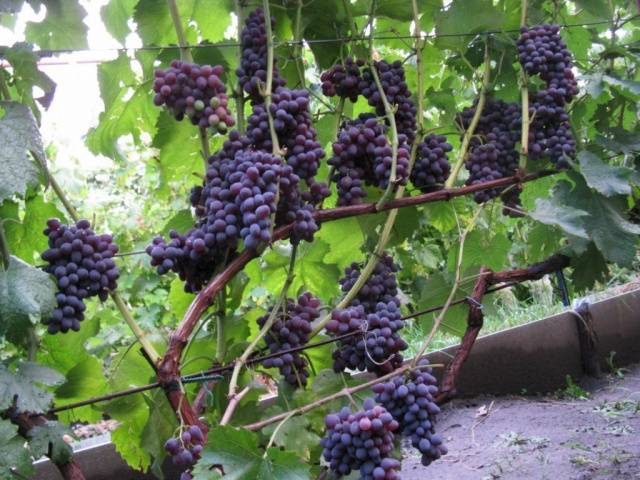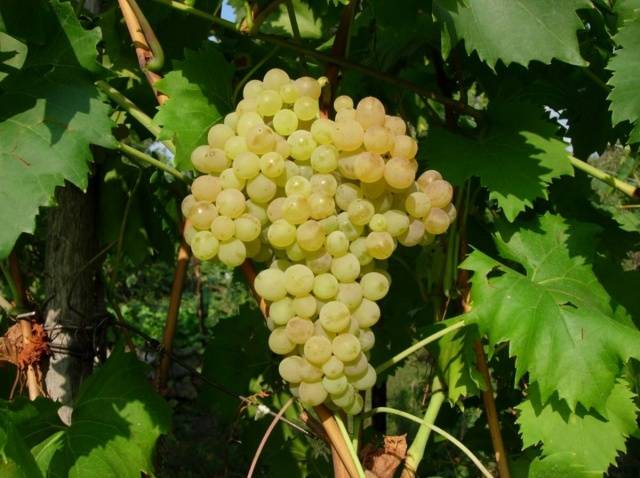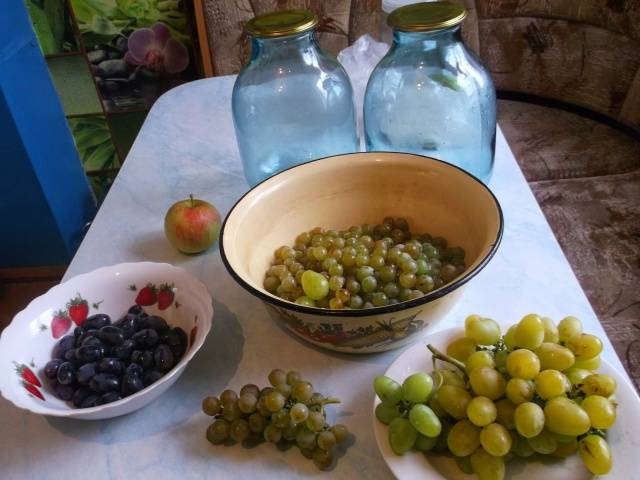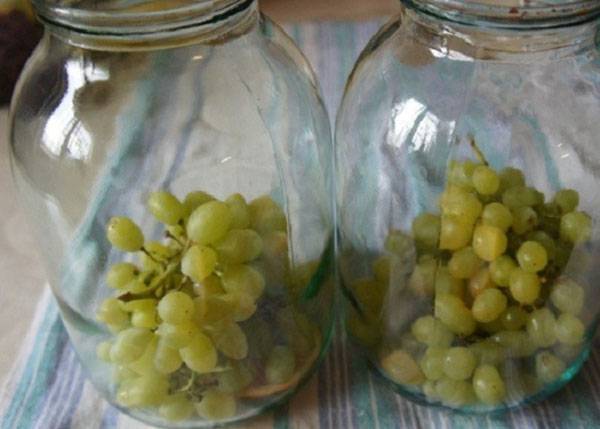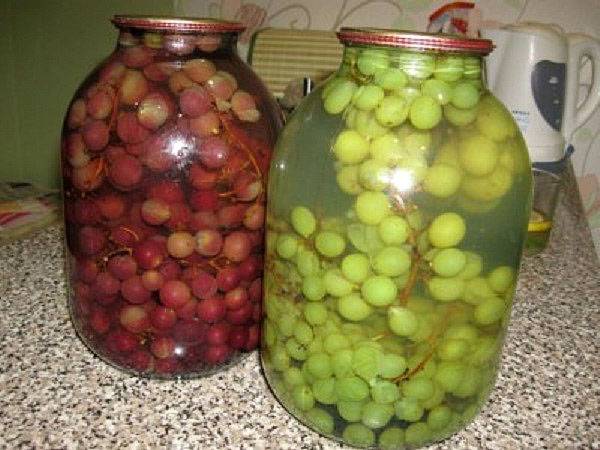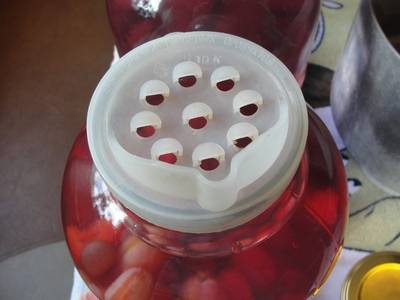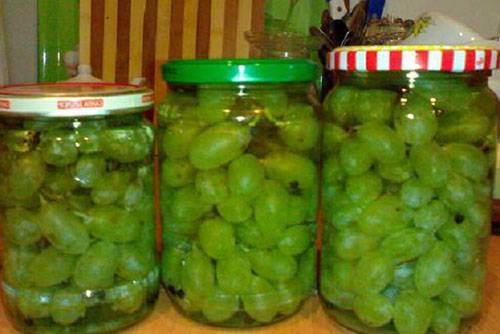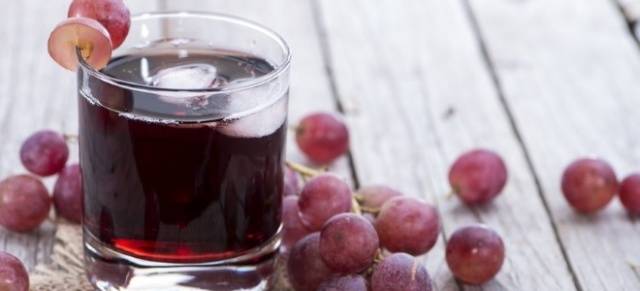Content
Grapes are partly a unique berry, because of all fruit and berry plants, it undoubtedly ranks first in terms of sugar content in it. Its berries can contain from 2 to 20% sugar, mainly in the form of fructose and glucose, up to 1% organic acids and many vitamins and minerals.
Well, the raisins are remarkable already in that there is not a single bone in it, which means that its use is truly versatile. Possessing all the other advantages and useful properties of grapes, raisins will not spoil the taste of the finished dish even with a hint of bitterness or astringency, which can in a subtle form be characteristic of drinks, juices and other preparations that are made from ordinary grape varieties with seeds. And of course, it can serve as a great decoration for fruit desserts, salads, and even cakes. Moreover, for these purposes, berries from compote may well be used. It is only important that they are strong and intact.
Kishmish grape compote can be created in several versions and this article will be devoted to this topic.
Preparation of berries
If someone with the phrase "raisins grapes" appears in front of their eyes only light balls of small size, then you need to correct them a little. Seedless grapes, that is, raisins, are very elongated oval, and also dark, almost purple in color.
Of course, purple berries will look the most beautiful in compote, especially since they will color the drink itself in a noble rich burgundy color. But light berries will look no worse, if only a few leaves of cherry or blueberries, or a dark red apple, cut into thin slices, are added to the jars with compote during its preparation.
For grape compote, berries taken from twigs can be used separately, or whole twigs with grapes. True, in the latter case, the taste of the compote itself may turn out to be slightly tart due to the presence of scallops. But everyone's tastes are different and someone may, on the contrary, turn out to be a big lover of such a subtle tart note in compote.
So, if you are going to use whole branches with berries, then first they must be carefully examined from all angles and all damaged, rotten or soft berries must be removed. Only after the end of this procedure, each bunch is washed under a strong stream of cold water and then lowered into a bowl of clean water for about 20 minutes, so that all excess is finally torn off from the brush with grapes, and it can be painlessly removed. Finally, each brush is rinsed again under running water and laid out on a napkin or towel to dry.
If only individual grapes will be used to make compote, then the preparation scheme is somewhat different. To begin with, you need to collect all the berries from each bunch, simultaneously putting aside all the crumpled, spoiled and overripe grapes. Then the berries are poured with cold water and washed slightly in it, but carefully so that the juice does not drip from them.
After washing, the berries are laid out in a colander to drain off excess liquid. Then they are ready for use.
The easiest and most popular recipe
This recipe enjoys well-deserved popularity among the people due to its simplicity and speed of production. It can often be found under the name of non-sterilized compote.
You can use three-liter jars, but sometimes it is more convenient to spin the compote in one-liter jars, especially if there are not very many grapes. But one can is opened for consumption at a time and does not deteriorate later in the refrigerator.
Banks must be sterilized. You can do this in boiling water or over steam, and most conveniently in an oven or in an airfryer.
According to the recipe, for each kilogram of grapes, prepare 2 liters of water and 250 grams of sugar. The water is immediately brought to a boil in a separate large saucepan.
Arrange the prepared grapes in banks so as to occupy no more than 1/3 of the banks in volume. The amount of sugar required by the recipe is poured on top. The jars are carefully poured with boiling water up to the very neck and immediately closed with tin lids and turned upside down. If you carefully wrap them up with something warm and leave them in this form until they cool completely, then additional self-sterilization will occur. As a result, when you hide the cans for storage, the compote will have time to acquire a rich, beautiful color.
Double - triple fill method
The following canning method, although it will take you more time, is considered more traditional. According to this recipe, grape compote has been spun for the winter for a long time.
First you need to prepare the syrup. Usually 200-300 g of sugar are taken per liter of water. If the raisins are very sweet, and they can be really sugary with sweetness, then take sugar to a minimum, but provide for the addition of citric acid.
In a saucepan, mix the water and sugar and bring to a boil to check that the sugar is completely dissolved. Arrange the prepared grapes in the jars, filling them by about one third. Pour the boiling syrup over the jars of grapes and let them brew for 15 minutes. Then pour the syrup from the cans back into the pot.
The syrup in a saucepan is brought to a boil again, cooked for 2-3 minutes and a pinch of citric acid is added to it. Then the boiling syrup is again poured into the jars of grapes. At this point, the cans can already be twisted. This will be quite enough if the banks are supposed to be stored in the basement or cellar. For storage in a room, it is advisable to pour the syrup from the cans into a saucepan again, bring it to a boil again and pour it into the cans again. Only after that the cans are rolled up with special tin lids.
Grapes in the company of other fruits
Thanks to their sweetness, grapes go well with many sour and sweet-sour fruits and berries. The most often used recipe for canning compote from grapes and apples. Often, grape compote is supplemented with plums, dogwood or even lemon.
As a rule, other fruits are taken about half the weight of grapes. However, when using apples and plums, it is quite possible to take an equal amount of grapes and these fruits.
The mixture of grapes and fruits of your choice is laid out in jars and poured over with hot syrup.To prepare the syrup, 300 grams of sugar are dissolved in one liter of water.
Then the cans with compote are placed in a pot of hot water and sterilized for 10-15 minutes from the moment the water boils. After rolling up with sterile lids, the grape and fruit compote can be stored in a regular pantry.
Sugar Free Recipe
Rice grapes, as a rule, are so sweet that compote from it can be spun for the winter even without adding sugar. This drink will be very healthy and can perfectly invigorate and cheer you up. Put the grapes in sterile jars quite tightly, but do not ram them. When the jar is full to the brim, carefully pour the boiling water on top so that the jar does not crack. Immediately cover the jar with a lid and set it to sterilize for 10-15-20 minutes, depending on the volume of the jar. Screw the cap back on after sterilization. Sugar-free grape compote is ready.
Unfortunately, fresh grapes cannot be stored for a long time, and this berry does not relate very well to freezing. But making compotes from grapes is an easy and reliable way to preserve the taste and nutrients of this berry during a long and harsh winter.
